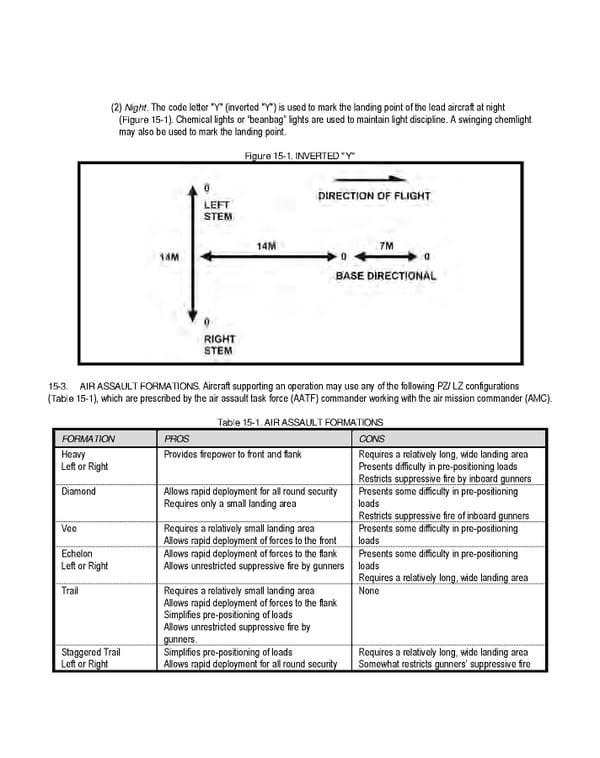(2) Night. The code letter "Y" (inverted "Y") is used to mark the landing point of the lead aircraft at night (Figure 15-1). Chemical lights or “beanbag” lights are used to maintain light discipline. A swinging chemlight may also be used to mark the landing point. Figure 15-1. INVERTED "Y" 15-3. AIR ASSAULT FORMATIONS. Aircraft supporting an operation may use any of the following PZ/ LZ configurations (Table 15-1), which are prescribed by the air assault task force (AATF) commander working with the air mission commander (AMC). Table 15-1. AIR ASSAULT FORMATIONS FORMATION PROS CONS Heavy Left or Right Provides firepower to front and flank Requires a relatively long, wide landing area Presents difficulty in pre-positioning loads Restricts suppressive fire by inboard gunners Diamond Allows rapid deployment for all round security Requires only a small landing area Presents some difficulty in pre-positioning loads Restricts suppressive fire of inboard gunners Vee Requires a relatively small landing area Allows rapid deployment of forces to the front Presents some difficulty in pre-positioning loads Echelon Left or Right Allows rapid deployment of forces to the flank Allows unrestricted suppressive fire by gunners Presents some difficulty in pre-positioning loads Requires a relatively long, wide landing area Trail Requires a relatively small landing area Allows rapid deployment of forces to the flank Simplifies pre-positioning of loads Allows unrestricted suppressive fire by gunners. None Staggered Trail Left or Right Simplifies pre-positioning of loads Allows rapid deployment for all round security Requires a relatively long, wide landing area Somewhat restricts gunners’ suppressive fire
 Ranger Handbook Page 275 Page 277
Ranger Handbook Page 275 Page 277